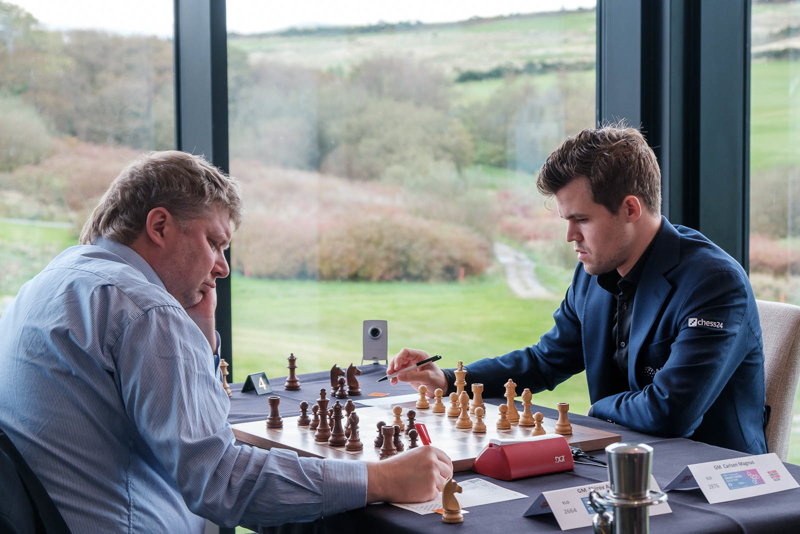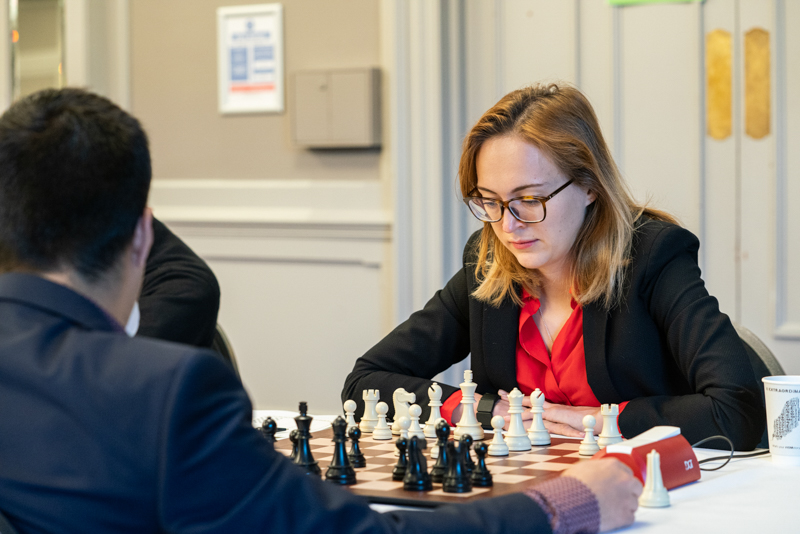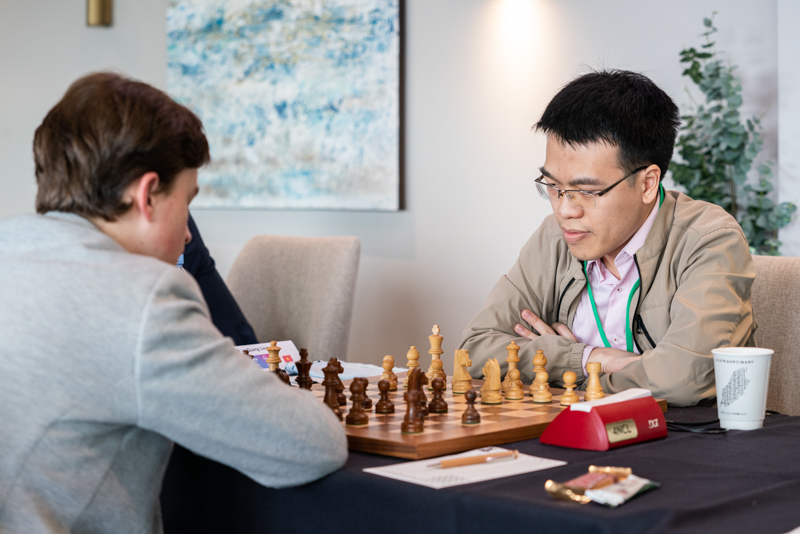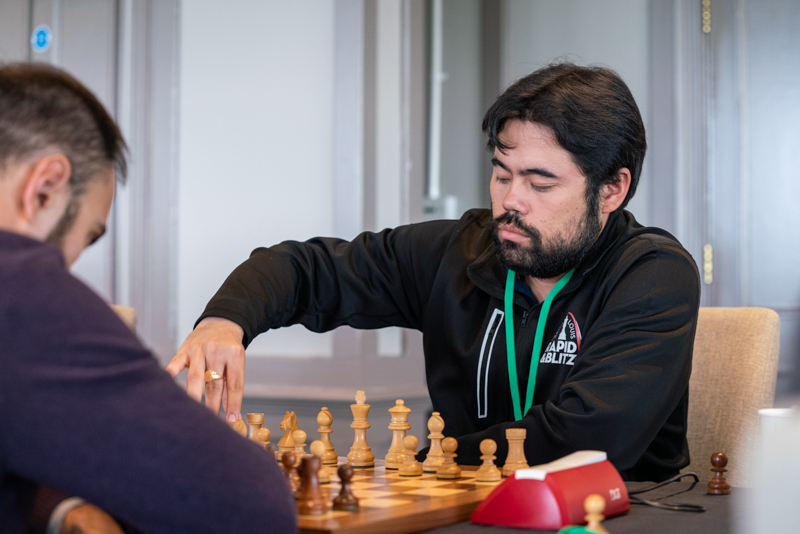Five to go
The FIDE chess.com Grand Swiss is an eleven-round event that serves as qualifier to the 2020 Candidates Tournament. It takes place from the 10th to the 21st of October, with a rest day on the 16th. You can find more info here.
In less than a week's time we will know who becomes the newest participant of the 2020 Candidates Tournament and who gets to triumph at the first edition of the Grand Swiss — it might or might not be the same person.
As of now, nine players have the most realistic chances of fighting for the title — those with a tally of 4½ or 5 points. We can speculate that 8 or 8½ points will be the winning score and, given the strength of the field, a player who is currently on 4 out of 6 will need to have a very good second half to both tie or surpass the tally of one of the current leaders and get a high enough tiebreak score despite their sub-optimal start.
But these are only conjectures — stranger developments have been seen in the past.

Parham Maghsoodloo and Alexander Grischuk were the exception in round six insofar they signed a quick draw | Photo: Maria Emelianova / chess.com
Perhaps the favourite after six rounds is Fabiano Caruana. The American beat Vladimir Fedoseev in round five despite having defended a wretched position for almost seven hours the day before. The half point he saved on Monday is both a testament to his fighting spirit and the kind of 'lucky breaks' champions tend to get along the way.
It must be added, however, that Fedoseev's opening choice with Black was rather strange — the Russian allowed his famed opponent to plant a strong bishop on d6 and put himself on the back foot as early as move 12. Black's only source of compensation was his passed d-pawn...except that Caruana also had a strong passer of his own:
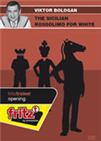 The Rossolimo Variation 3.Bb5 is considered to be one of the strongest replies to 2…Nc6 in the Sicilian Defence. The fact that the move has been played by practically all the top players proves its popularity and strength. But the most interesting aspect of playing 3.Bb5 is that we force sharp, attacking players who love to have the initiative to forget about the Open Sicilian and to adjust themselves to a new world, one full of positional ideas, manoeuvres and nuances.
The Rossolimo Variation 3.Bb5 is considered to be one of the strongest replies to 2…Nc6 in the Sicilian Defence. The fact that the move has been played by practically all the top players proves its popularity and strength. But the most interesting aspect of playing 3.Bb5 is that we force sharp, attacking players who love to have the initiative to forget about the Open Sicilian and to adjust themselves to a new world, one full of positional ideas, manoeuvres and nuances.
After Fedoseev resigned himself to giving up his knight with 30...♞xb6 in order to prevent the b-pawn from queening, he was already a whole rook down. Caruana only needed to avoid a few tricks before getting his fourth win of the event.
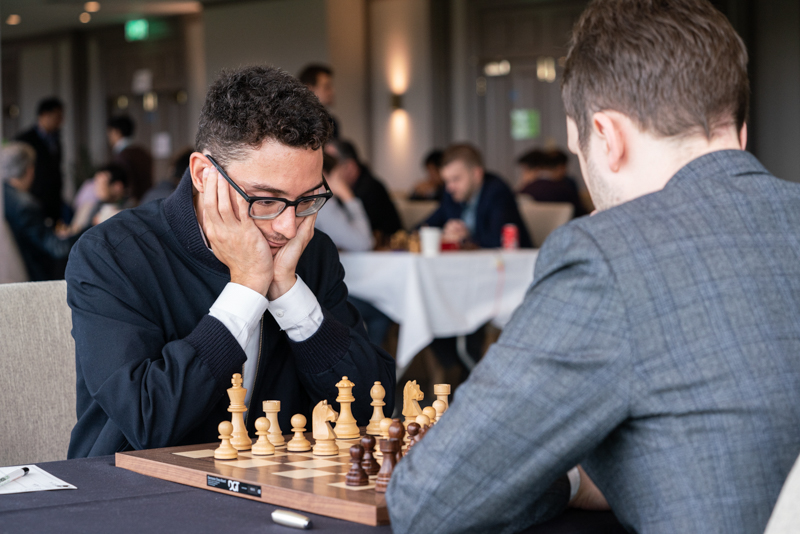
Fabiano Caruana | Photo: Maria Emelianova / chess.com
Things did not go so well for the player that almost claimed the scalp of the world number two in round five. Luke McShane had the black pieces against a clearly in-form Wang Hao and his approach in the opening did not serve him well. White made good use of his strong centre and handled the initiative carefully from an early stage.
Nevertheless, McShane did miss a chance to get a more balanced endgame:
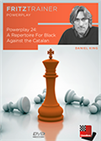 On this DVD Grandmaster Daniel King offers you a repertoire for Black against the Catalan, based around maintaining the rock of a pawn on d5. Keeping central control ultimately gives Black good chances to launch an attack against the enemy king.
On this DVD Grandmaster Daniel King offers you a repertoire for Black against the Catalan, based around maintaining the rock of a pawn on d5. Keeping central control ultimately gives Black good chances to launch an attack against the enemy king.
As usual, the Englishman had invested a considerable amount of time in the opening, and most likely was already feeling pressured at this point. After a six-minute think, he opted for 24...♞d7 instead of 24...♝xe2 — a sample line after the bishop capture is 25.♖d2 ♞h5 26.♖xe2 ♞xg3, when White's structure is weakened. Instead, after the text, Wang Hao went for 26.e6, giving up his extra pawn while creating weaknesses on Black's camp.
Soon enough, White regained the extra pawn, and the technical phase began. The Chinese patiently improved his king's position and claimed the win after making his 63rd move.
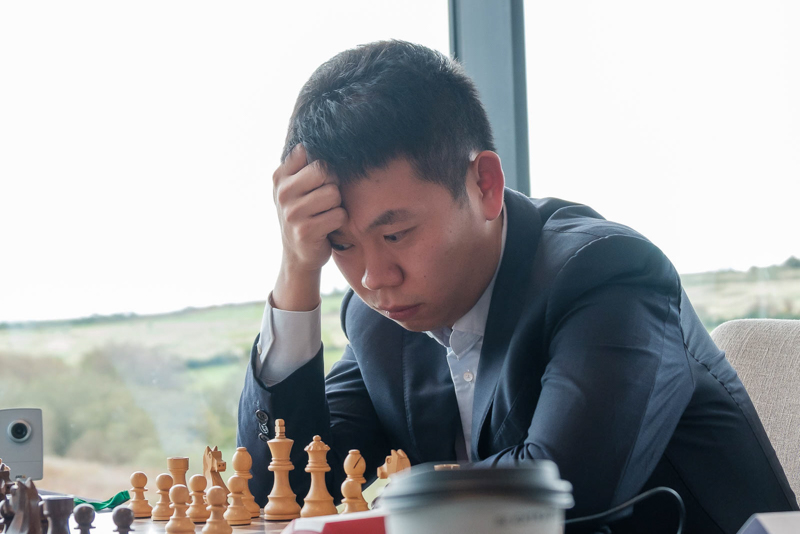
Wang Hao was ruthless in the endgame phase | Photo: John Saunders
Five new chasers
The one short 'strategic' draw of the day was seen on board two, where Parham Maghsoodloo and Alexander Grischuk — co-leaders after round four — split the point after 31 moves. This result means they are still well in the race for first place, but it also gave them a chance to kick off the resting period a little earlier than their colleagues.
In the meantime, five players scored full points to close on the leaders. The most threatening for all involved surely is a certain Magnus Carlsen. The world champion faced Alexei Shirov's Petroff Defence and got a strategical advantage out of the opening akin to the one obtained by Nikita Vitiugov against Wesley So in the recent World Cup.
Carlsen was particularly proud of his rook manoeuvre in the early middlegame:
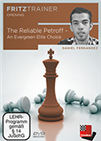 The Petroff (or Russian) Defence which is characterised by the moves 1.e4 e5 2.Nf3 Nf6 has been popular at the highest levels for many years and enjoys the reputation of being an extremely solid defence.
The Petroff (or Russian) Defence which is characterised by the moves 1.e4 e5 2.Nf3 Nf6 has been popular at the highest levels for many years and enjoys the reputation of being an extremely solid defence.
The Norwegian played 16.♖fb1 with the sole intention of provoking 16...b6. He then returned his rook to the centre with 17.♖d1, and now Black cannot transfer his queen to a5. Aware of the fact that he was about to get slowly strangled positionally, Shirov opened up the kingside with 17...g5. However, the holes around his king's position were too much to handle later on — resignation came on move 43.
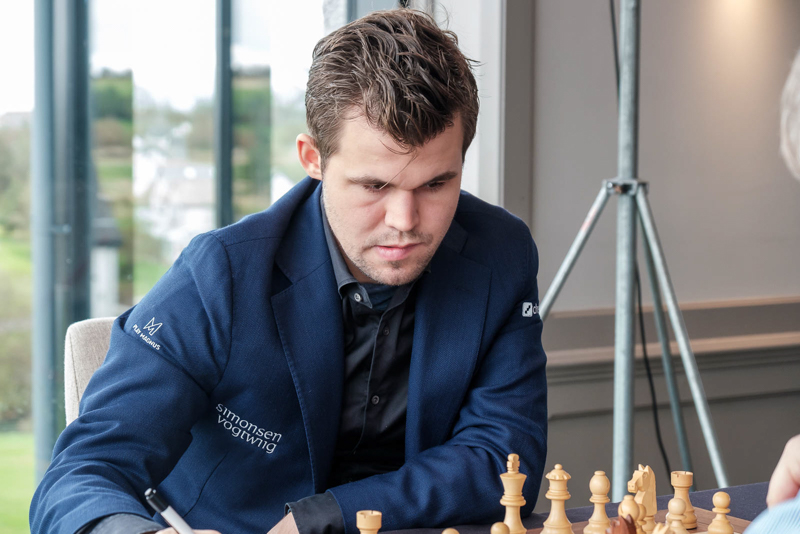
It is all but impossible to count him out — Magnus Carlsen | Photo: John Saunders
Carlsen was not the only 2700+ player joining the chasing pack on Tuesday. While Levon Aronian got a full point against Aleksey Dreev after the attack of the latter backfired, Nikita Vitiugov was the one hunting down Matthias Bluebaum's king — in his case, successfully:
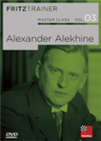 On this DVD GMs Rogozenco, Marin, Müller, and IM Reeh present outstanding games, stunning combinations and exemplary endgames by Alekhine. And they invite you to improve your knowledge with the help of video lectures, annotated games and interactive tests
On this DVD GMs Rogozenco, Marin, Müller, and IM Reeh present outstanding games, stunning combinations and exemplary endgames by Alekhine. And they invite you to improve your knowledge with the help of video lectures, annotated games and interactive tests
Vitiugov later told Fiona Steil-Antoni that when he discussed the game with his opponent they both thought White's attack, starting with 17.♗xf7+, was simply winning. However, the unforgiving engines showed there was an unlikely defence for Black after 17...♚xf7 18.♕h5+ ♚g8 19.♖e8:
Here the computers show 19...♛a3 as the one saving recourse. Of course, this evaluation is based on long variations in which Black needs to be extremely precise, a close-to-impossible task even for strong grandmasters. In the game, the German opted for 19...♛xc5 and saw his king being harassed by White's army starting with 20.♖xf8+ ♚xf8 21.♖e1 ♝d7 22.♕g5. The game lasted 35 moves.
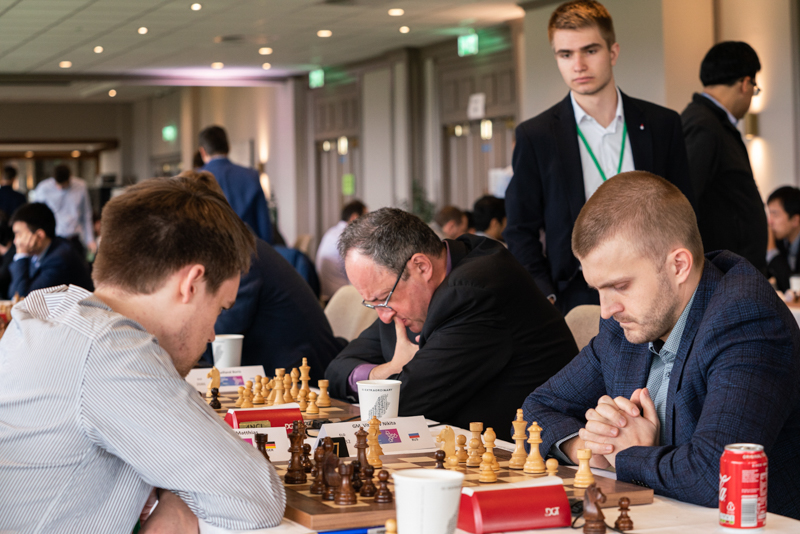
Nikita Vitiugov facing Matthias Bluebaum, while Aleksey Sarana strolls on the background | Photo: Maria Emelianova / chess.com
David Anton and Kirill Alekseenko — coincidentally both 2674-rated GMs — also won and climbed to shared third place. Anton got the better of Aleksandr Lenderman from a queenless middlegame in which he only had a strategical advantage, while Alekseenko needed 41 moves to defeat Vladimir Akopian with the white pieces.
Wednesday is a rest day. The action returns on Thursday with Grischuk v Caruana, Aronian v Wang and Alekseenko v Carlsen on top boards (see more pairings below).
Round-up show
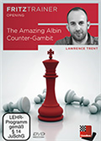 On this DVD IM Trent shows the Albin Counter-Gambit (1.d4 d5 2.c4 e5). Trent found a number of extremely dangerous Theoretical Novelties which will truly put the Albin Counter-Gambit back on the map.
On this DVD IM Trent shows the Albin Counter-Gambit (1.d4 d5 2.c4 e5). Trent found a number of extremely dangerous Theoretical Novelties which will truly put the Albin Counter-Gambit back on the map.IM Lawrence Trent recapped the action of round six
Commentary webcast
Commentary by GM Daniel King and IM Anna Rudolf
Pairings for Round 7 (top 20 boards)
...77 boards
All games of Round 6
All games available at Live.Chessbase.com
Links
